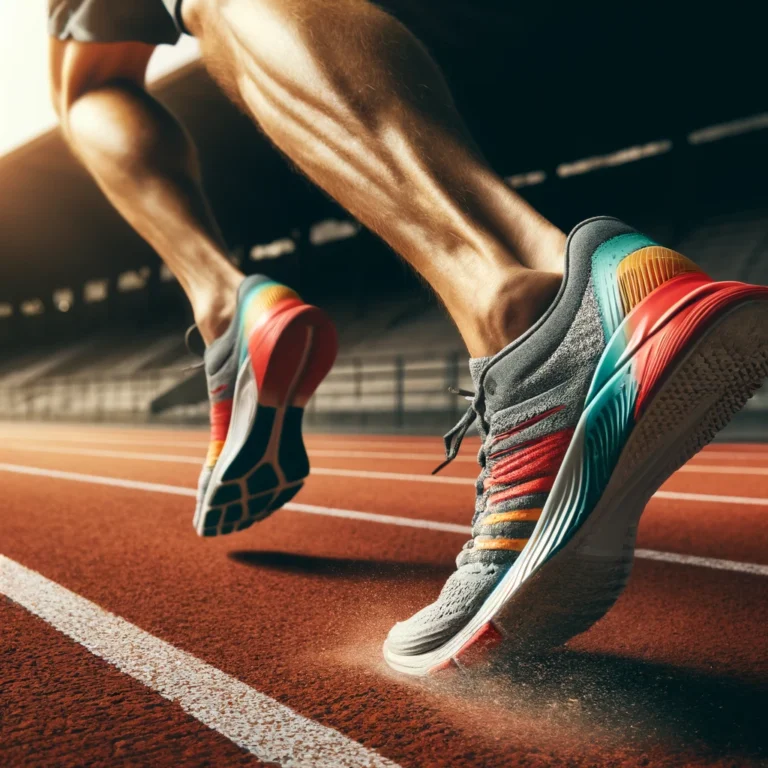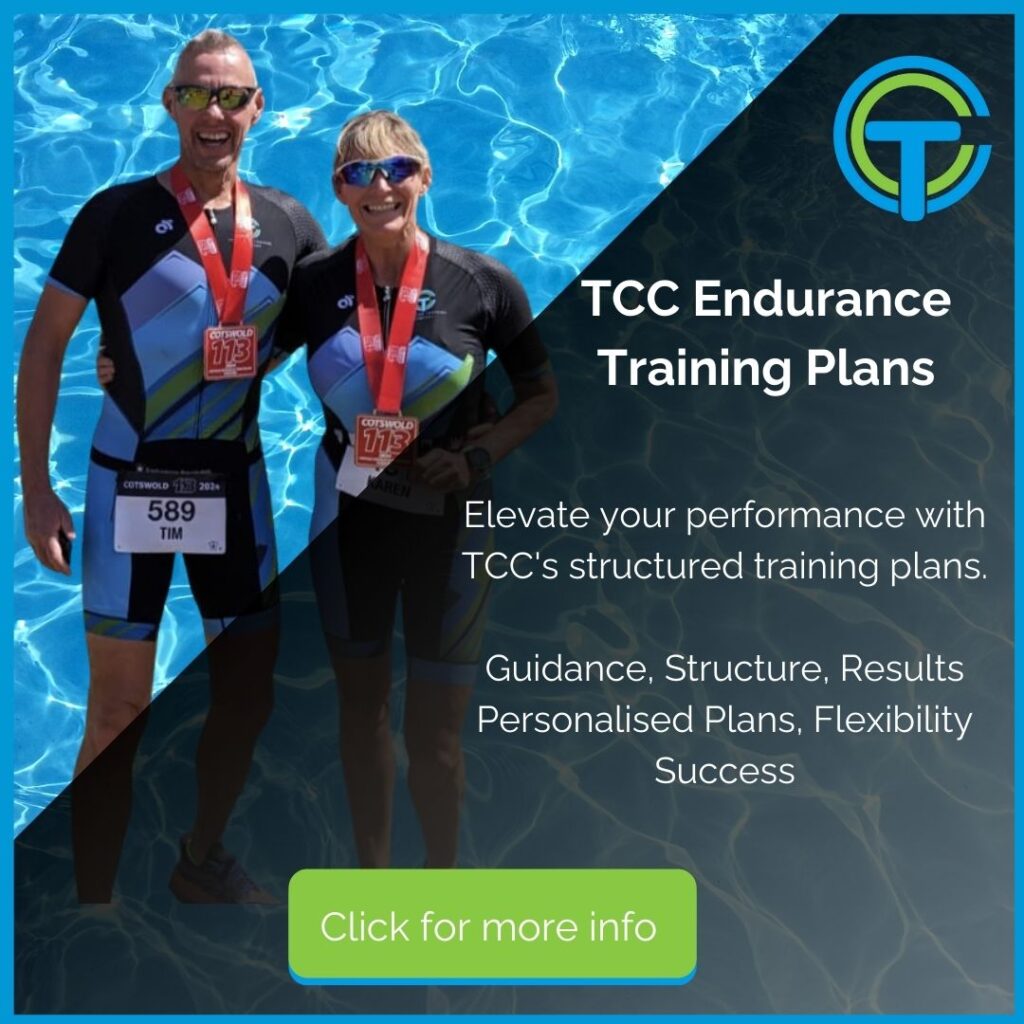As endurance athletes, we often explore various metrics to enhance our performance, delving into aspects that can offer that extra edge. Today, we focus on a crucial but sometimes overlooked element in running:
Understanding and optimising GCT is not just about shaving off seconds; it’s a gateway to a deeper understanding of our running biomechanics and how we can fine-tune our performance. From weekend warriors to elite marathoners, grasping the nuances of GCT can be a game-changer. So, lace up your running shoes, and let’s embark on a stride-by-stride journey to explore the ins and outs of Ground Contact Time, its impact on your running, and how you can master this element to become a more efficient, faster, and resilient runner.
In the following sections, we’ll dive into what GCT is, why it matters, how you can measure it accurately, and, most importantly, practical strategies to improve it. Whether you’re looking to set a new personal best or run more comfortably, understanding GCT is your next step forward.
What is Ground Contact Time?
Ground Contact Time, or GCT, is one of those metrics that can impact our understanding of running (more explicitly running efficiency, more of that later). Simply put, GCT is the amount of time your foot remains in contact with the ground during each step of your run. It sounds straightforward, but this brief touchpoint is a complex ballet of biomechanics, playing a pivotal role in how efficiently and effectively you move.
Picture this: several subtle things happen when your foot strikes the ground. Your muscles, tendons, and joints work together to absorb impact, stabilise your body, and propel you forward into the next stride. GCT captures the essence of this process, encapsulated in the milliseconds your foot spends on the ground.
But why does this matter? In the realm of running, efficiency is king. A shorter GCT often indicates a more efficient stride. Efficient runners tend to have a quicker foot turnover, spending less time on the ground and more in the air. This efficiency can translate to better performance, as less energy is expended on each step, allowing for greater endurance and speed over distances.
However, GCT isn’t a one-size-fits-all metric. It varies significantly among runners depending on speed, fatigue, running surface, and footwear. Elite runners often exhibit a remarkably short GCT, demonstrating their incredible biomechanical efficiency. For the rest of us, understanding our GCT and how we can improve it is the first step towards running more like the pros. Equally, it is worth remembering that GCT is not a direct measure of running skill or efficiency as a whole but rather a piece of the puzzle contributing to overall running efficiency.
Why is Ground Contact Time Important?
If running efficiency is the King, Ground Contact Time (GCT) is undoubtedly one of its most loyal knights. It’s a key indicator of how well you’re using your energy and how effectively you’re propelling yourself forward with each stride. The importance of GCT in running cannot be overstated, as it directly impacts two crucial aspects of performance: speed and endurance.
First, let’s talk about speed. Imagine running as a rhythmic dance where each step counts. A shorter GCT means you’re spending less time on the ground and more time moving forward. This increased ‘air time’ correlates with a faster pace. When your foot is on the ground for less time, you’re powering through your strides more efficiently, improving speed. It’s like fine-tuning a well-oiled machine; the smoother and quicker its parts move, the faster it runs.
Endurance, on the other hand, is about how long you can sustain your efforts. A longer GCT typically means more energy is being used with each step. Over the miles, this can lead to quicker fatigue, slowing you down and possibly even cutting your run short. Reducing your GCT helps conserve energy, allowing you to maintain your pace for extended periods. It’s about running smarter, not harder.
Research backs this up. Studies have shown a clear correlation between reduced GCT and enhanced running performance. Elite athletes consistently demonstrate shorter GCTs than their amateur counterparts, highlighting this metric’s role in top-tier performance. (Mooses, M. et al., 2021).
But GCT isn’t just about the elite. It’s a critical piece of the puzzle for runners at all levels striving to improve, whether training for their first 5K or aiming to qualify for the world championships; understanding and optimising their GCT can be a significant step towards achieving their goals.
In the following section, we’ll explore how to measure your GCT accurately. Knowing your numbers is the first step in making meaningful changes to your running form and strategy.
Measuring Ground Contact Time
Now that we understand the importance of Ground Contact Time (GCT), the next logical step is measuring it. Thankfully, with technological advancements, getting accurate GCT readings is more accessible than ever for runners of all levels.
Modern running watches and foot pods are the go-to tools for measuring GCT. With each stride, these devices use advanced sensors or algorithms to track your foot’s time on the ground. The data is not just a number; it’s a window into your running mechanics, offering insights that were once exclusive to high-tech labs.
Accuracy and reliability are crucial when selecting a device to measure GCT. The best running watches provide real-time feedback, allowing you to monitor your GCT during your run. This immediate data can be precious, especially when trying out new running techniques or during interval training.
But what do these numbers mean? Let’s go ahead and put it into context. According to Garmin’s literature, Elite runners often exhibit a GCT of less than 200 milliseconds, a testament to their extraordinary efficiency. For amateur runners, the GCT can range significantly higher. The key here is not to get fixated on matching elite runners’ numbers but to understand your baseline and work towards improving it.
It’s also important to remember that GCT can vary based on factors like running speed, fatigue, and even the type of surface you’re running on. So, when measuring your GCT, try to do so in a controlled environment to ensure consistency in your readings.
By accurately measuring and understanding your GCT, you’re equipping yourself with the knowledge to make impactful changes.
Strategies to Improve Ground Contact Time
Improving your Ground Contact Time (GCT) is not just about running faster; it’s about running smarter. By reducing your GCT, you can enhance your running efficiency and performance. Here are some practical strategies to help you achieve this:
Strength Training:
Stronger legs translate to a more powerful stride. You can incorporate strength training exercises like squats, lunges, and calf raises into your routine. This increased muscle strength helps generate force quicker, effectively reducing the time your foot stays on the ground.
Plyometric Drills:
Plyometrics, or jump training, improves explosiveness. Exercises like box jumps and bounding help develop the fast-twitch muscle fibres used in quick, powerful movements, directly impacting your GCT.
Focus on Running Form:
Your running form is crucial. Work on a higher cadence with shorter, quicker strides. Avoid overstriding, where your foot lands too far in front of your centre of gravity, which can increase GCT.
Hill Workouts:
Running hills uphill and downhill can improve leg strength and running economy. The effort of pushing uphill and the control required when running downhill contribute to reducing your GCT.
Interval Workouts:
Incorporate intervals and tempo runs into your training. These high-intensity workouts improve neuromuscular coordination and teach your body to maintain a faster pace with a shorter GCT.
Footwear Considerations:
The right shoes can make a difference. Lightweight, responsive shoes reduce GCT compared to heavier, cushioned ones. However, shoe choice is highly individual, so experiment to find what works best for you.
Regular Feedback and Adjustment:
Regularly check your GCT data and adjust your training accordingly. Be mindful of the changes in your GCT as you experiment with different techniques and training methods.
Remember, improving GCT is gradual and shouldn’t be the sole target. It should be part of a holistic approach to improving your running performance. It involves fine-tuning various aspects of your training and running form. While seeking quick results is tempting, patience and consistency are key. Incorporate these strategies mindfully; over time; you’ll likely see a positive shift in your running efficiency.
Considerations and Limitations of Ground Contact Time
While Ground Contact Time (GCT) can be a valuable metric for enhancing running efficiency, it’s essential to acknowledge its limitations and the potential downsides of overemphasising it.
1. Over-Reliance on Data: An excessive focus on GCT can lead to an over-reliance on data, potentially overshadowing other critical aspects of running, such as form, pacing, and personal comfort. Runners who fixate solely on GCT might neglect the holistic nature of their training and overall running experience.
2. Individual Variability: GCT can vary significantly among runners due to differences in running style, physical build, and fitness levels. What constitutes an “ideal” GCT for one runner may not be suitable for another. Thus, striving for a universal GCT standard can be misleading and counterproductive.
3. Risk of Injury: Overzealous efforts to alter one’s GCT can sometimes lead to injury. Abrupt changes in running mechanics to achieve a shorter GCT might put undue stress on muscles, tendons, and joints, especially if not done under proper guidance.
4. Technology Limitations: The accuracy of GCT measurements depends on the technology used. Not all devices are equally precise; some might give misleading data, leading to incorrect assumptions and training adjustments.
5. Psychological Pressure: Constant monitoring of GCT can create unnecessary psychological pressure, turning the joy of running into a rigid pursuit of numbers. This can lead to decreased motivation and even burnout, especially in recreational runners.
To mitigate these issues, it’s advisable to use GCT as one of several metrics in a balanced training approach. Listen to your body, consider feedback from a coach and focus on gradual improvements rather than drastic changes. Remember, for most of us, this is an enjoyable hobby, and if you constantly put pressure on yourself to perform, you may lose sight of this!
Conclusion
In conclusion, whether you’re an aspiring marathoner, a seasoned ultra-runner, a super-fast triathlete, or somewhere in between, focusing on your GCT can lead to new personal bests and more enjoyable running experiences.
Remember, each runner’s journey to optimising their GCT is unique. It involves strength training, technique refinement, and consistent tracking. The key is to start with your baseline, set realistic goals, and embrace the process of gradual improvement. Like any aspect of training, changes in GCT take time, patience, and persistence.
As you lace up your shoes for your next run, consider your contact with the ground. Each step is an opportunity to run smarter, stronger, and longer.
Happy running, and may each step bring you closer to your goals!
References
Mooses, M. et al. (2021) “Shorter Ground Contact Time and Better Running Economy: Evidence From Female Kenyan Runners,”, 2(35),p. 481-486. Available at: https://doi.org/10.1519/JSC.0000000000002669.




